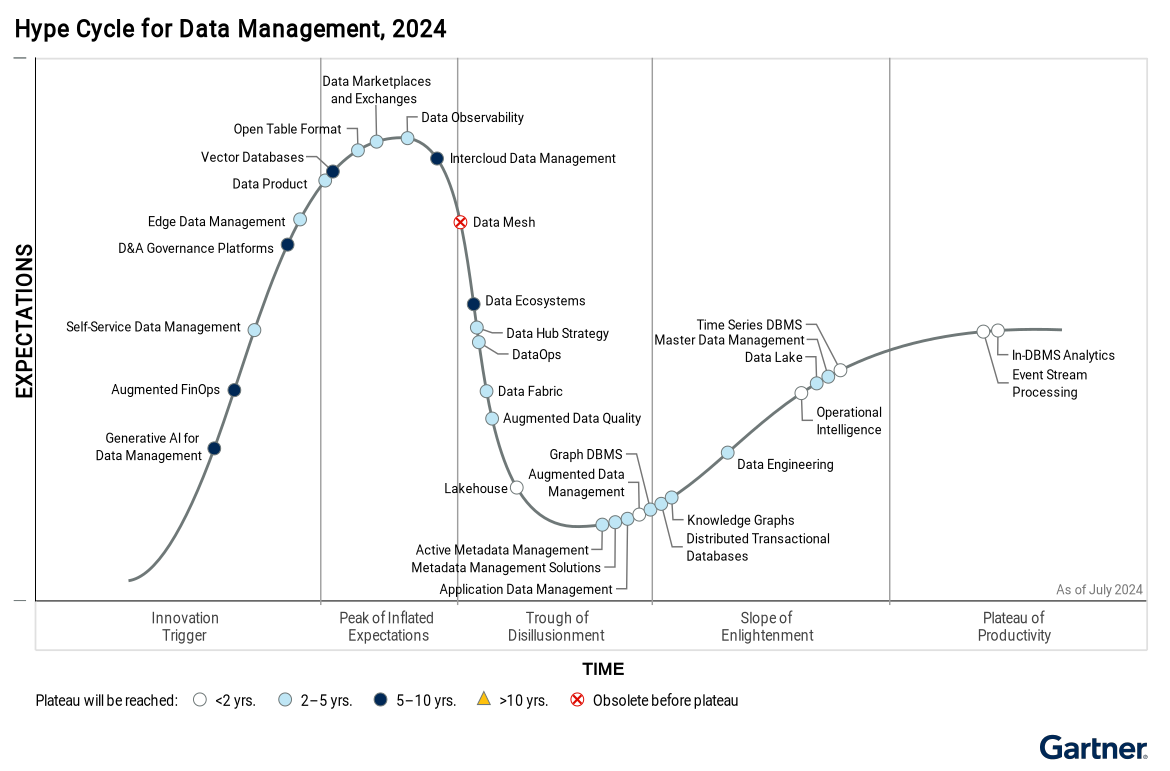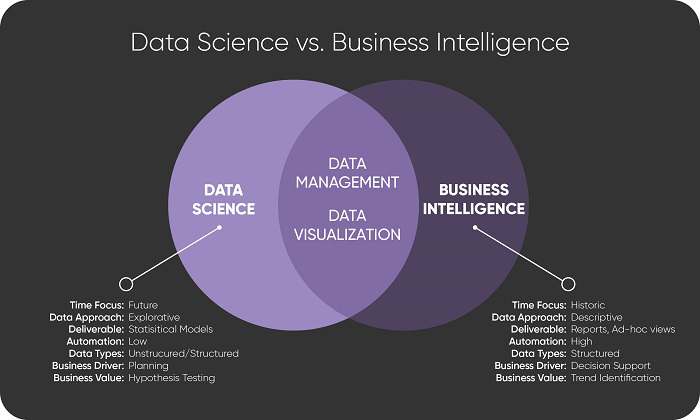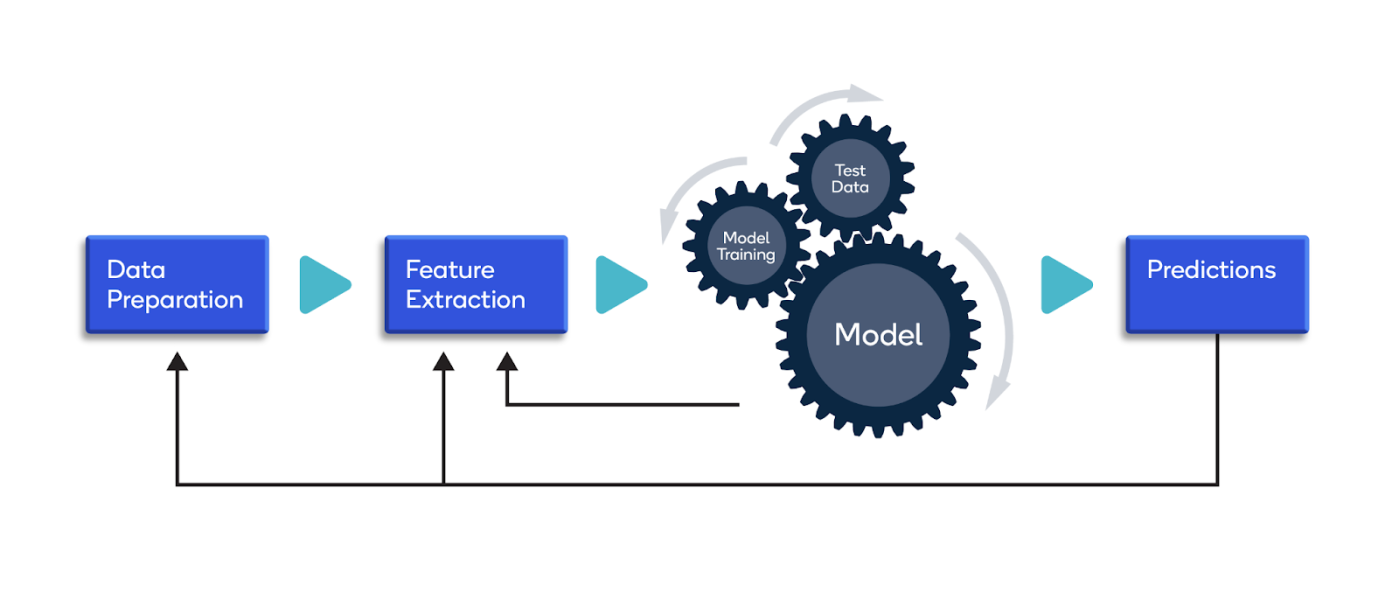A 4-Step Guide to Unlock Your Data for Smarter Growth
Published: June 25, 2025
So, your company has embraced Digital Transformation. You've got the CRM, the ERP, perhaps a CPQ or marketing automation platform humming along. Processes are digitized, and things are, presumably, more efficient than in the paper-shuffling days. Congratulations, you've built a solid foundation! But here’s the kicker: this digital infrastructure has also turned your company into a massive data factory, often without you even realizing its full potential.
For the past 20 years, "Digital Transformation" was the buzzword. Now, most businesses are sitting on mountains of data generated by these digital platforms. The challenge? Much of this data is unused, lying dormant. But what if I told you this data is the key to unlocking unprecedented efficiency, hyper-scalable growth, and ultimately, a dominant position in the coming AI revolution?
Think Spotify or Netflix. These companies have been capitalizing on their data by running algorithms that become self-refining for improving the user experience, and thus gaining a competitive advantage. One thing that these companies have done right from the start is that they have embedded Data Science into every product, every department and every business line within the organization.

For most other companies, especially in B2B, navigating this new reality can be a bit more tricky. Business leaders are constantly bombarded with an array of terms and technologies, from data fabrics and decision intelligence to active metadata and generative AI. According to Gartner, the landscape of data is a complex mix of emerging trends, maturing technologies, and powerful concepts, each promising transformative results. But, in my experience, the key is to cut through the noise with a clear, practical plan. This is where we get to the core of the modern business journey, a tangible progression in three acts:
- Digital Transformation (You're likely here): You adopted digital tools, and these tools started collecting data.
- The Data Revolution (This is where you need to be now): You consciously start putting that data to work.
- The AI Supremacy (This is the future, built on today's data efforts): You leverage high-quality data to build powerful AI models that give you a significant competitive edge.
This article provides a clear, practical framework specifically for RevOps and commercial organizations to navigate the Data Revolution. We’ll break down how to transform your existing data into your most powerful asset for sustainable growth and prepare for an AI-driven future.
Digital Transformation: The Accidental Data Goldmine
Think about it. Every customer interaction in your CRM, every transaction in your ERP, every click on your website, every engagement with your marketing campaigns – it’s all data. Digital Transformation wasn’t just about streamlining processes; it inadvertently made your company incredibly data-rich.
The problem is, without a strategy, this data can feel overwhelming or, worse, go completely ignored. But this "exhaust" from your digital engines is precisely the fuel you need for the next phase of growth. The good news? You likely already have most of the raw materials.
Why the Race for Quality Data is Crucial (Especially Now)
You've probably heard the phrase "data is the new oil." It's true. But just like crude oil, raw data isn't very useful. It needs to be found, refined, and then used to power something. In business, that "something" is smarter decisions, more efficient processes, personalized customer experiences, and, increasingly, artificial intelligence.
The rise of AI isn't a distant dream; it's happening now. Businesses are racing to implement AI and Machine Learning (ML) to gain an edge. But here’s a critical truth: AI is only as good as the data it learns from. If you feed it incomplete, inaccurate, or biased data, you’ll get flawed predictions and ineffective actions. It’s the classic "crap in, crap out" scenario.
Therefore, the current race isn't just about adopting AI tools; it's about cultivating high-quality, comprehensive datasets. This is the bedrock of scalable business operations and sustainable growth. Companies that master their data today are building the foundation for AI leadership tomorrow.
Your 4-Step Framework to Data Power: Collect → Organize → Analyze → Activate
For RevOps and commercial teams, making data actionable can seem daunting. Here’s a straightforward framework to guide your efforts:

Step 1: COLLECT – Identifying and Gathering Your Data Streams
The first step is to understand what data you have and ensure you're systematically collecting it:
- Customer Data: All touchpoints – leads, contacts, accounts, opportunities, support tickets, communications (from CRM like Salesforce, HubSpot).
- Transactional Data: Product usage, purchase history, subscriptions, invoices (from ERPs like SAP, NetSuite, or billing platforms).
- Behavioral Data: Website visits, app usage, marketing engagement, social media interactions (from tools like Google Analytics, Mixpanel, Amplitude, or Customer Data Platforms (CDPs) like Segment or Tealium which help unify customer data from multiple sources).
- Firmographic/Technographic Data: Information about your target companies (for B2B).
How to get started 👉🏼 Map out your customer journey and identify all data-generating touchpoints. Ensure these are being captured reliably. Don’t aim for perfection initially; start with your most critical data sources.
Step 2: ORGANIZE – Turning Raw Data into a Reliable, Usable Asset
Raw data is often messy, siloed, and inconsistent. This step is about bringing order to the chaos. It involves:
- Data Cleaning: Correcting errors, removing duplicates, standardizing formats.
- Data Integration: Bringing data from disparate sources (CRM, ERP, marketing tools) into a central location.
- Data Transformation: Structuring the data in a way that’s optimized for analysis (e.g., creating unified customer profiles).
- Data Governance: Establishing rules and processes for data quality, security, and compliance.
The oole of Data Engineering is to implement best data practices, building data pipelines to automate the collection, integration, and transformation processes. The tools for doing this job are:
- ETL/ELT Tools (to Extract, Transform, Load data): Fivetran, Stitch Data, AWS Glue, Azure Data Factory can automate moving data from source systems.
- Data Warehouses/Lakehouses (to store and organize refined data): Snowflake, Google BigQuery, Amazon Redshift, Databricks Lakehouse provide platforms to consolidate and manage your structured data for analysis.
Step 3: ANALYZE – Extracting Insights and Understanding "What Happened and Why?"
Once your data is organized, you can start asking questions and uncovering valuable insights:
- Reporting & Business Intelligence (BI): Tracking Key Performance Indicators (KPIs), creating dashboards to monitor business health (e.g., sales performance, marketing ROI, customer churn rates).
- Data Science & Advanced Analytics: Going deeper to understand trends, segment customers, identify root causes of problems, and predict future outcomes. Why are certain customers churning? What are the characteristics of our most valuable customers?

The tools for performing this job lay typically within two categories:
- BI & Reporting Tools: Microsoft Power BI, Tableau, Looker (Google Cloud) allow you to create interactive dashboards and reports.
- Data Science Platforms: For more advanced analysis, teams might use Databricks, or work with languages like Python (with libraries such as Pandas, Scikit-learn) in environments like Jupyter Notebooks.
Step 4: ACTIVATE – Making Data Drive Decisions and Power Growth
This is where the magic happens. Insights are useless if they don’t lead to action. This usually involves:
- Data-Driven Decision Making: Using insights from the "Analyze" phase to inform strategic business decisions at all levels, from top management strategy to frontline operational adjustments.
- Process Optimization: Identifying bottlenecks and inefficiencies in your sales, marketing, or service processes and using data to fix them.
- Personalization: Tailoring marketing messages, product recommendations, and customer experiences based on data.
- Building AI/ML Models: This is the advanced stage of activation. Using your high-quality, organized data to:
- Predict customer churn and proactively intervene.
- Score leads to help sales prioritize efforts (Predictive Lead Scoring).
- Forecast demand and optimize inventory.
- Automate routine tasks, freeing up your team for higher-value activities.
Here are some examples of activation of the data in practice:
- A RevOps team uses a predictive model built on historical CRM data to identify at-risk accounts, triggering automated alerts and playbooks for the customer success team.
- Marketing uses customer segmentation from analyzed data to run highly targeted campaigns through their marketing automation platform, significantly improving conversion rates.
- Sales leadership uses insights from sales cycle analysis to refine sales stages and coaching strategies.
The AI Horizon: Built on Today’s Data Discipline
The "AI Supremacy" we talked about isn't about buying some off-the-shelf AI solution and expecting miracles. It’s earned by companies that have diligently gone through the Collect, Organize, and Analyze stages. Your ability to develop or effectively leverage AI that truly differentiates your business will depend almost entirely on the quality, richness, and accessibility of the data assets you build today.

This four-step framework isn't just about better reporting; it’s your pathway to building that proprietary data advantage for the AI-driven future.
Your Quick Start to Unlocking Data's Value
Feeling overwhelmed? Don't be. Start small and build momentum.
- Perform a Data Audit: Identify your top 2-3 most critical business questions or challenges. Then, map out what data you currently collect (or could collect) that might help answer them. Where does it live? Is it accessible? What's its quality?
- Launch a Pilot Project: Don't try to boil the ocean. Pick one specific area (e.g., improving lead qualification, reducing churn for a key customer segment). Apply the "Collect → Organize → Analyze → Activate" framework to this single use case.
- Invest Incrementally in Skills & Tools: Based on your pilot, identify gaps. You might need a better way to integrate data (an ETL tool), a more robust place to analyze it (a BI tool or data warehouse), or new skills on your team. Start with what provides the most immediate value and scale from there.
Conclusion: From Data Overload to Data-Driven Growth
The era of simply having digital systems is over. The companies that will thrive in the coming years are those that transform their operational data into strategic insights and, eventually, intelligent actions. The journey from Digital Transformation to the Data Revolution, and onward to leveraging AI, starts with a conscious decision to put your data to work.
By following the Collect → Organize → Analyze → Activate framework, RevOps and commercial teams can move from being passive data collectors to active drivers of efficiency, growth, and innovation. The data you need is likely already within your grasp. It’s time to unlock its power.
If you are a business leader grappling with growth and marketing challenges in this new era and want to discuss these concepts further, feel free to connect. You can find me on X (formerly Twitter) and LinkedIn.
